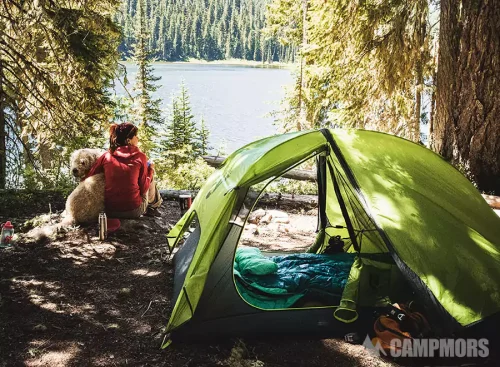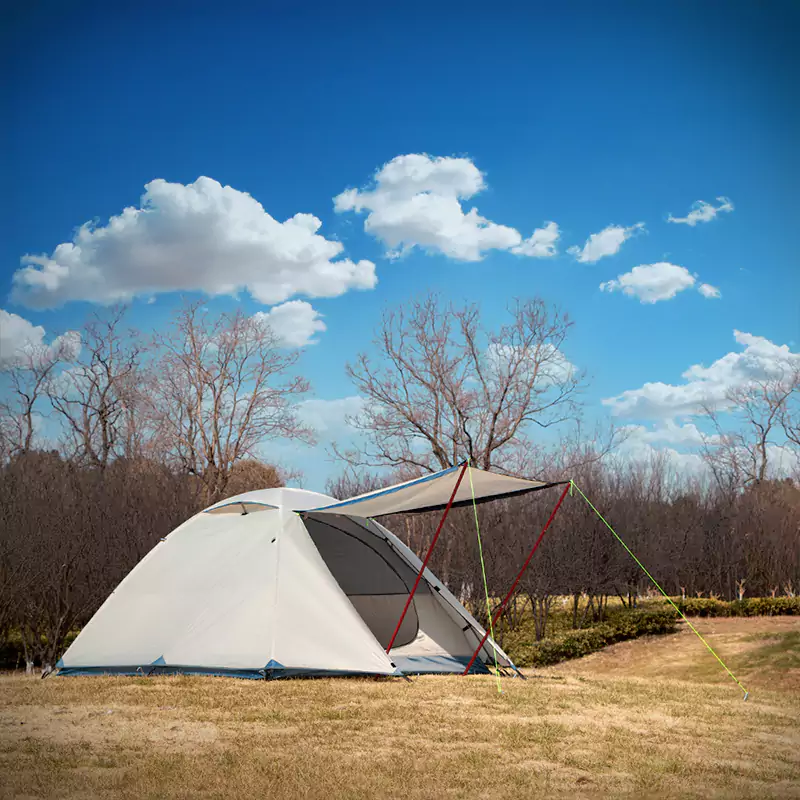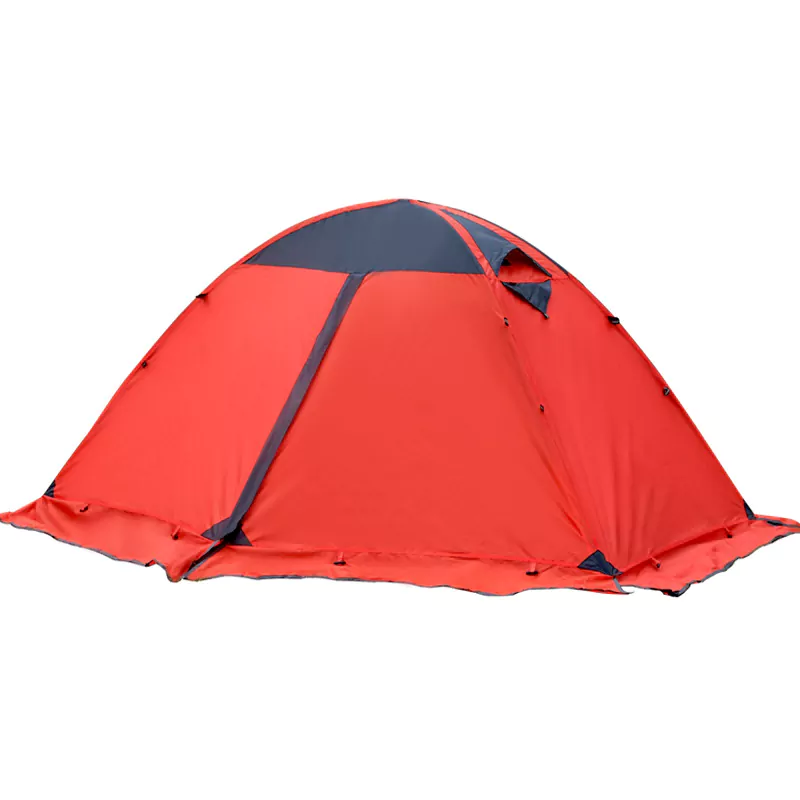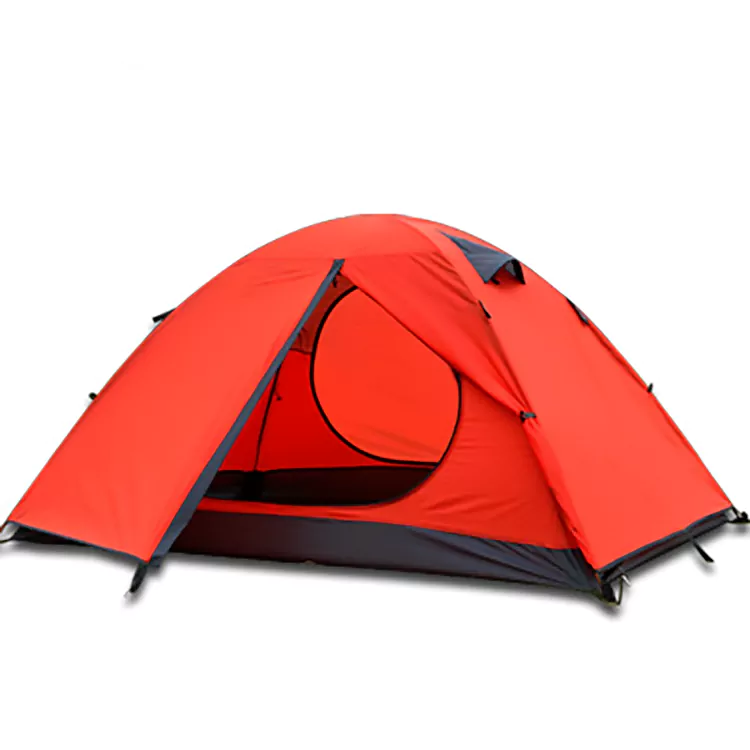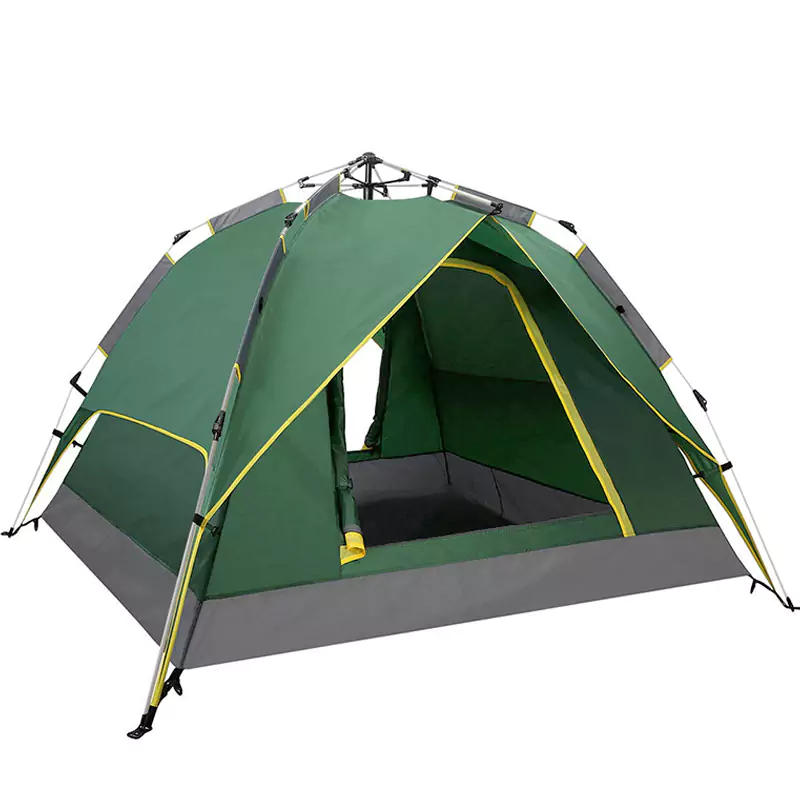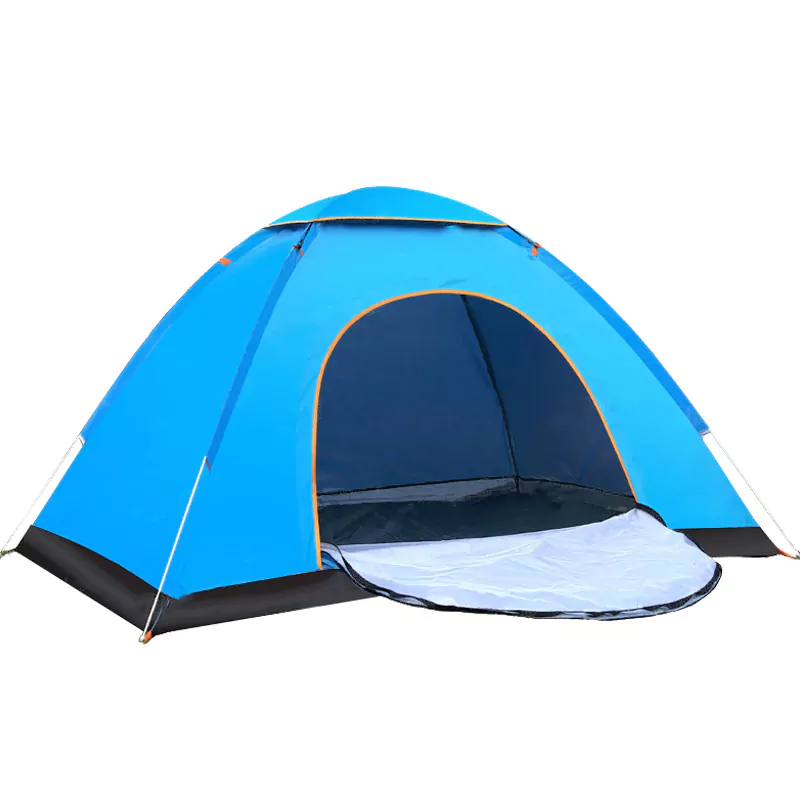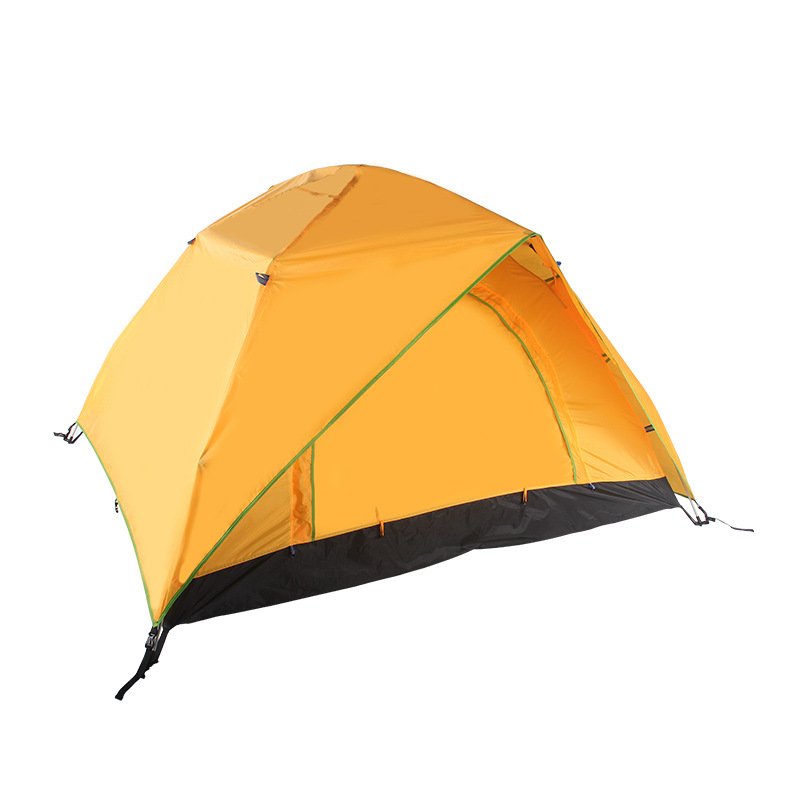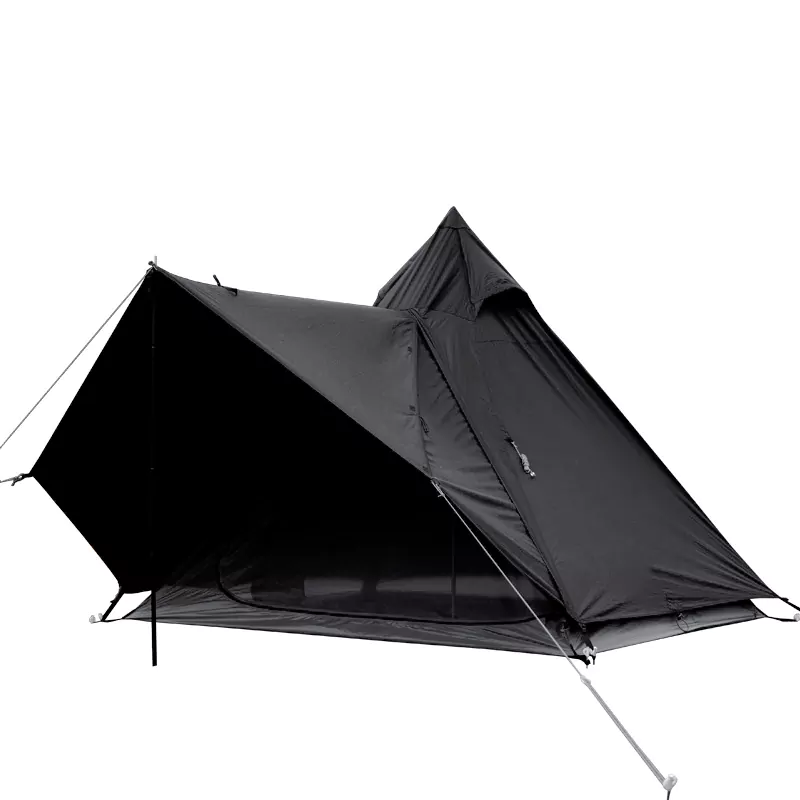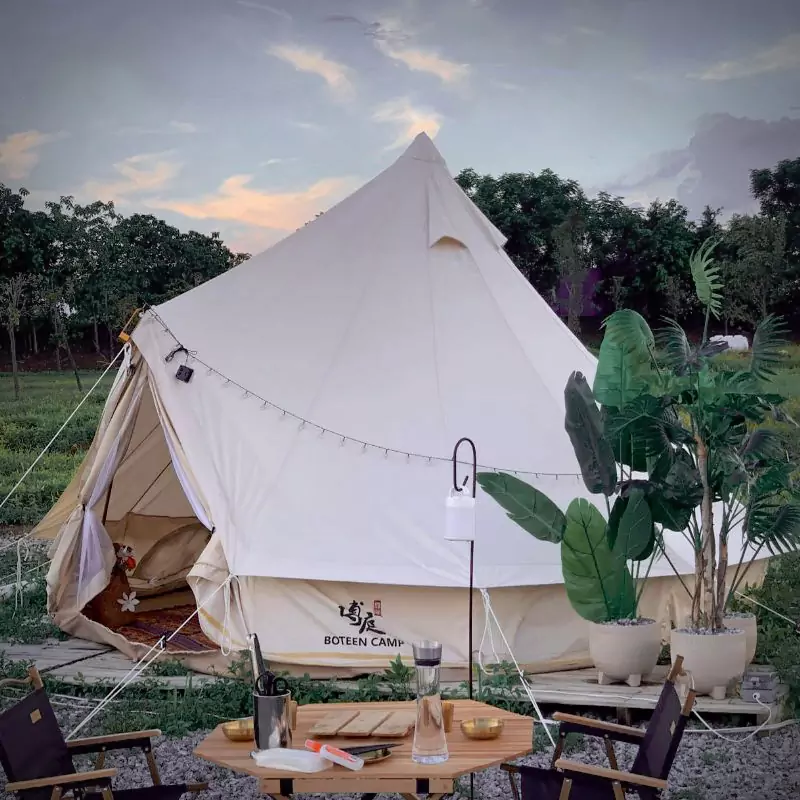At present, the mainstream tent materials on the market are mainly cotton, canvas, polyester, nylon and Oxford cloth. Each material has its own product advantages and disadvantages. Below we will take out canvas tent vs polyester tent vs nylon tent and explain them one by one:
Nylon tent: Nylon fabric is a kind of man-made fabric, made of 100% synthetic fibers. The first widely used parachute during World War II. Currently widely used in outdoor products, it is characterized by strong and lightweight, which is very friendly to backpackers. The weight reduction helps to the load of our hike.
However, due to the high elasticity of nylon tents, it has a disadvantage: it is prone to wrinkles after being stretched a lot.
And nylon has a relatively high water absorption performance, and it is easy to absorb water and expand if it is in a humid environment for a long time. In the wild, it may cause the tent fabric to sag, so we often recommend using the wind rope to tighten it to prevent the tent body from sagging. Coatings are now used to alleviate this problem, but the water absorption of nylon is still higher than that of polyester tents under the same conditions.
Polyester tent: Tents made of polyester fabric have become more and more popular in recent years.
In the same humid environment, the water absorption stability of polyester taffeta tent fabric is better than that of nylon cloth. It retains its original shape after getting wet, making it more aesthetically appealing. polyester tent waterproofing. At the same time, due to the different weaving process of polyester, its thickness is thicker than nylon, and it is more UV-resistant.
It can be seen that polyester weight, water absorption, UV resistance and abrasion resistance are all comprehensive. It can meet the conditions required for many ordinary camping activities. If you are a four-season travel enthusiast, you may bring a tent to the wild for a relaxing weekend at any time, and a polyester tent is the best choice. He’s generally more aesthetically pleasing and more affordable than nylon, which is why I choose it.
The fabrics of nylon and polyester tents generally break down and deteriorate faster than canvas tents. But they’re cheaper, and if you’re looking to buy the newest current tent every few years, nylon and polyester tents are the best options.
Canvas tent: Canvas (Oxford cloth) was first used in marine navigation or miners in mining operations, and later it was widely used due to its excellent wear resistance. Therefore, among these materials, canvas is the thickest and most wear-resistant, and has super tear resistance. At the same time, it can let the air circulate and prevent the diffusion of moisture and mold growth. If stored properly, the service life of canvas tents is very long. You can take it on a trip anytime.
At the same time, the canvas has strong stability and is not easily affected by the environment. When used in tents, a layer of silver coating or black glue can also be added to the inside of the tent, which is more conducive to heat insulation.
The weight of the canvas is not negligible either, thanks to its thick fabric that provides solid abrasion resistance. Please accept its heavier quality than nylon and polyester when choosing.
Cost comparison of polyester, nylon and canvas tents: polyester < nylon < canvas tent.

